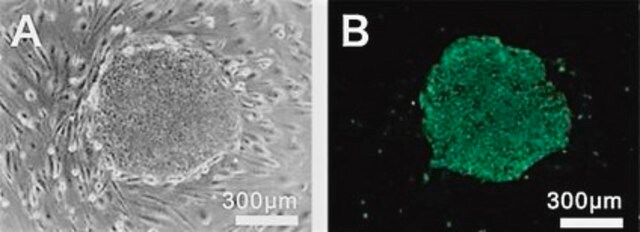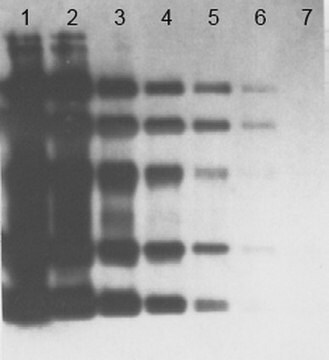SCT240
BioTracker™ Blue TFCH Oxidative Stress Probe
Synonym(s):
Live Cell Imaging Probe
Sign Into View Organizational & Contract Pricing
All Photos(2)
About This Item
UNSPSC Code:
41106514
NACRES:
NA.47
Recommended Products
biological source
human
Quality Level
mol wt
calculated mol wt 280.63 kDa
packaging
vial of 1 mg
manufacturer/tradename
Millipore
growth mode
N/A
technique(s)
cell based assay: suitable
flow cytometry: suitable
immunofluorescence: suitable
detection method
fluorometric
shipped in
dry ice
storage temp.
−20°C
General description
Nephrotoxicity, or drug-induced kidney injury, is a critical consideration when developing new therapeutics. Screening methods currently used to detect and/or assess nephrotoxicity or other cytotoxicity secondary to candidate compounds may not have the molecular specificity to inform results of screening, as traditional toxicity screens are often limited to simple cell viability, morphology, and mitochondrial function readouts. Common screening assays may furthermore lack sensitivity, detecting only severe nephrotoxicity induced by high doses of or long exposures to tested compounds. Mild toxicity in a cell model may present very differently in vivo, necessitating kidney toxicity assays that are sensitive and specific enough to ensure therapeutic safety.One approach to enhancing the utility of toxicity screening assays is to measure oxidative stress, which is often more sensitive to mild drug injury. While certain indicators of oxidative stress such as increases in reactive oxygen species (ROS) or depletion of reductants are transient, one durable change to kidney (and other) cells is the post-injury carbonylation of cellular biomolecules. 4-trifluoromethyl-7-hydrazinyl-2H-chromen-2-one (TFCH) is intended to enhance sensitivity to cell injury induced by nephrotoxic or cytotoxic substances in renal system applications including in vivo and in vitro models such as Madin-Darby Canine Kidney (MDCK) cells.Spectral Properties Fluorescence images were obtained by λex = 405 nm and emission at 550 to 650 nm.ReferenceMukherjee, et al. "A Novel Fluorogenic Assay for the Detection of Nephrotoxin-induced Oxidative Stress in Live Cells and Renal Tissue." ACS Sensors 6 (2021): 2523-2528.
Application
Purity: > 98% confirmed by HPLC. Identification confirmed by HNMR, LC-MS and elemental analysis.
Features and Benefits
Fluorescent live cell probe for visualizing oxidative stress, cytotoxicity, nephrotoxicity from candidate compounds and other substances.
Physical form
Lyophilized. Yellow solid.
Storage and Stability
Store at -20°C, desiccated and protected from light.Note: Centrifuge vial briefly to collect contents at bottom of vial before opening
Other Notes
Live cell fluorescent imaging
Legal Information
BioTracker is a trademark of Merck KGaA, Darmstadt, Germany
Disclaimer
Unless otherwise stated in our catalog or other company documentation accompanying the product(s), our products are intended for research use only and are not to be used for any other purpose, which includes but is not limited to, unauthorized commercial uses, in vitro diagnostic uses, ex vivo or in vivo therapeutic uses or any type of consumption or application to humans or animals.
signalword
Warning
hcodes
Hazard Classifications
Eye Irrit. 2 - Skin Irrit. 2 - STOT SE 3
target_organs
Respiratory system
Storage Class
11 - Combustible Solids
wgk_germany
WGK 3
Certificates of Analysis (COA)
Search for Certificates of Analysis (COA) by entering the products Lot/Batch Number. Lot and Batch Numbers can be found on a product’s label following the words ‘Lot’ or ‘Batch’.
Already Own This Product?
Find documentation for the products that you have recently purchased in the Document Library.
Our team of scientists has experience in all areas of research including Life Science, Material Science, Chemical Synthesis, Chromatography, Analytical and many others.
Contact Technical Service







